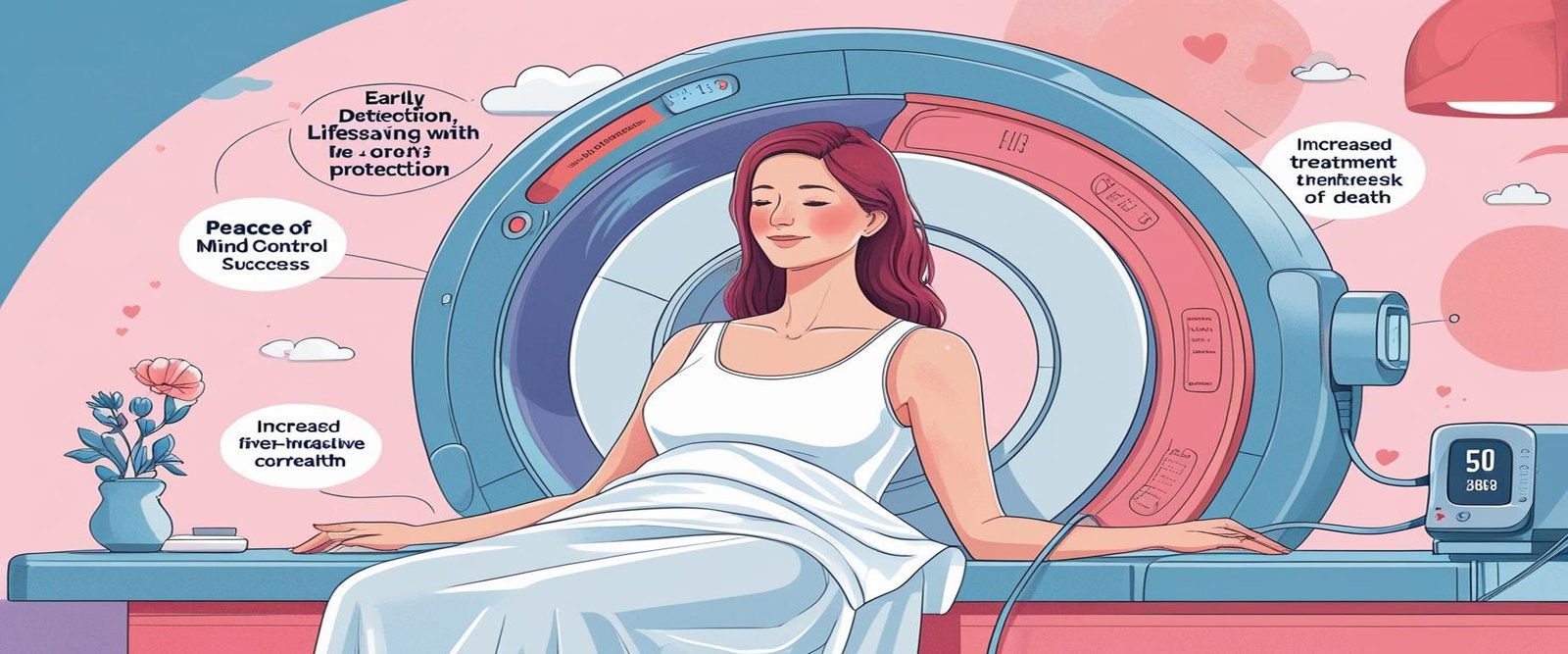
Mammography is more than just a medical test — it’s a powerful tool in the fight against breast cancer. It allows doctors to detect tumors and abnormalities in the breast before they can be felt or cause symptoms. Early detection through mammography significantly increases the chances of successful treatment and can dramatically reduce mortality rates. In fact, studies have shown that routine mammograms can lower the risk of dying from breast cancer by up to 40%.
A mammogram is a type of low-dose X-ray specifically designed to examine breast tissue. During the procedure:
The breast is placed on a flat support plate and gently compressed with a paddle.
Two images are typically taken of each breast (top-to-bottom and side views).
The entire process takes around 15–20 minutes.
While some women may feel discomfort or mild pain during compression, it is usually brief and well-tolerated.
1. Screening Mammogram – for women with no signs or symptoms of breast disease.
2. Diagnostic Mammogram – used when there are symptoms (like a lump or nipple discharge) or after an abnormal screening.
General recommendations vary slightly depending on guidelines and individual risk factors, but most health organizations suggest:
Women aged 40–44: Optional annual screening based on personal choice.
Women aged 45–54: Annual mammograms are recommended.
Women aged 55 and older: Mammograms every 1–2 years, depending on health and risk factors.
Women with a family history of breast cancer, genetic predisposition (like BRCA mutation), or a personal history of breast disease may need to begin screening earlier and more frequently.
Indications for Mammography
Mammography is advised in the following situations:
Routine breast cancer screening in asymptomatic women.
Evaluation of breast lumps or pain.
Unexplained nipple discharge or skin changes.
Follow-up of previously diagnosed breast conditions.
Post-treatment surveillance in breast cancer survivors.
Early detection saves lives: Most breast cancers found through mammography are smaller and more treatable.
Minimally invasive: A simple, quick procedure with no need for anesthesia.
Peace of mind: A normal mammogram can reassure women of their breast health.
Detects abnormalities before symptoms arise, offering a head start on treatment.
Despite its benefits, mammography is often surrounded by fear and myths:
❌ "Mammograms are only for older women."
✅ Truth: While the risk of breast cancer increases with age, younger women (especially with family history) can also benefit from screening.
❌ "It’s painful and harmful."
✅ Truth: Discomfort is minimal and brief. The radiation dose is very low and considered safe.
❌ "I don’t have symptoms, so I don’t need one."
✅ Truth: Breast cancer can be present with no symptoms. Mammography catches these hidden cases.
❌ "If I have no family history, I’m not at risk."
✅ Truth: Most women diagnosed with breast cancer do not have a family history.
Every woman deserves the chance to protect her health with accurate and early screening. Mammography is accessible, effective, and affordable in most parts of the world. Healthcare providers, communities, and families should encourage open discussions about breast health, dismantle fear around screening, and help women make informed choices.
If you're a woman aged 40 or older, or if you have risk factors, talk to your doctor about when to begin screening. Don’t wait for symptoms — take charge of your health today.
Pre Insurance Health Check Partner.
We are committed to improving people’s lives through personalized health care. When you refer your patient to us, we are pleased to assist you with the diagnosis, treatment and monitoring of your patients’ care